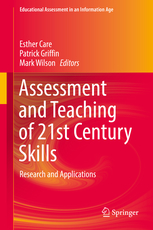Last September, the United Nations member states adopted the Sustainable Development Goals (SDGs), including the new global education goal to “ensure inclusive and equitable education and promote lifelong learning opportunities for all.” In the years prior to the adoption of the SDGs, the global education community was busy making sure education and learning were considered a priority on the member states’ agenda.
Recognizing the critical need for better data to improve education quality and measure learning, the Center for Universal Education (CUE) at Brookings and the UNESCO Institute for Statistics (UIS) convened a high-level task force in 2012 to define a small set of learning outcomes that could be tracked in every country.
Thus the Learning Metrics Task Force (LMTF) began.
CUE and UIS invited experts in the education sector, who were interested in learning and assessment, to apply to join one of our technical working groups. Anyone interested could also contribute to public consultations. We received an overwhelming response, with feedback from nongovernmental organizations like Camfed to multilaterals like the Global Partnership for Education, and from government organizations like India’s Ministry of Education to assessment organizations like the International Association for the Evaluation of Education Achievement (IEA).
It’s fitting, then, that the LMTF began during the dawn of the debate around the future of education and development and has sunset with adoptions of the SDGs. This past year, statistical experts from governments around the world have been meeting through the Inter-agency Expert Group on SDG Indicators to discuss the targets and indicators accompanying SDG 4 (as the education goal is better known). These discussions have more sharply defined the agenda and given us a galvanizing roadmap for the next 15 years, but we can still look back at the work and process of the LMTF to learn more about what’s ahead of us as we strive to reach our goal by 2030.
LMTF phase one—consultations, contributions, and criticism
The LMTF process from 2012 until now has been a journey. To define what learning is important for all children and youth, a volunteer working group quickly put together a “prototype” framework of learning domains based on research, existing global conventions, and their own experience. We released this prototype together with a consultation toolkit that led to valuable feedback on the working group’s framework from more than 500 people. They essentially ripped our ideas to pieces, with suggestions on global standards of learning that ranged from “how to use a refrigerator” to “how to love” and everything in between.
One of the most memorable consultations took place in rural Tanzania. A volunteer translated the questions into Kiswahili and met with a small group of teachers at the teacher training college to discuss their reactions and hear what they thought was important. With their feedback, they provided mobile numbers to receive updates on the LMTF’s progress (they did not have email addresses). We realized then that this initiative had struck a chord—rethinking how we assess learning was on everyone’s mind.
By the end of phase one, we held three open consultations and received advice from over 1,700 teachers, students, academics, government representatives, and education experts from 118 countries, including from 50 national education ministers or their representatives. After each consultation, the secretariat and working group members meticulously reviewed everyone’s suggestions and the LMTF came to several conclusions. While there were many ideas on what learning was important, the strongest theme was the need for breadth of learning domains. Too often education systems were focused solely on literacy and numeracy, and clearly the education community wanted to include these important skills within a wider range of competencies.
Thus, the LMTF’s first report put forth a holistic framework of seven learning domains for all students from early childhood through lower secondary: physical well-being, social and emotional, culture and the arts, literacy and communication, learning approaches and cognition, numeracy and mathematics, and science and technology.
This recommendation was captured by the “rising sun” presented in Figure 1.
Figure 1: The seven domains of learning recommended by the LMTF after its Phase 1.0 consultations.

The LMTF published two more reports in its first phase. The second report recommended six areas of measurement to fill the global data gap on learning, and the third report focused on the critical question of implementation, with recommendations for practical actions to deliver and measure progress toward improved learning outcomes. A final summary from LMTF 1.0 outlined a series of recommendations to use existing assessments of learning as well as new and innovative measures to improve learning opportunities and outcomes for all children and youth.
The emergence of LMTF 2.0
As the task force sorted through all of its consultations, it became clear that by opening up these debates we had a responsibility to see these ideas through. At a regional consultation in Nairobi in the final phase of LMTF 1.0, our colleagues from Kenyan government offices and civil society said, “This is the first time we have all come together to discuss how we measure learning. You opened up this conversation, we gathered the people together, but what are we going to do about it?” Our colleagues working in global education, including some of the task force members, affirmed this sentiment, and some publicly criticized the LMTF for being too focused on global politics and leaving behind the teachers and country-level implementers.
As a group, we decided that our work was not finished, and we shifted into a second phase of the LMTF: finding practical ways to implement our own recommendations (to be continued…)
Special thanks to Tyler Ditmore for his contributions to this blog.








Commentary
At the dawn of Sustainable Development Goal 4, the Learning Metrics Task Force sunsets (Part 1)
May 16, 2016